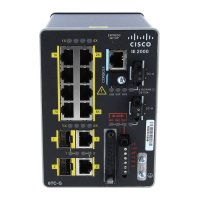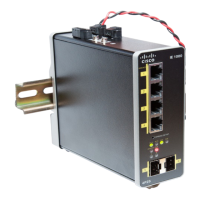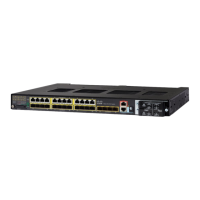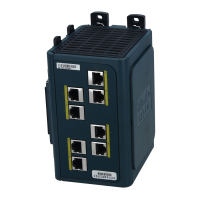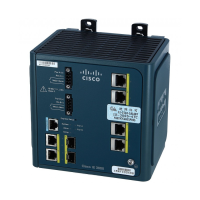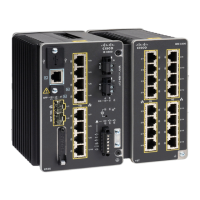614
Configuring QoS
Configuring QoS
Command Purpose
1. configure terminal Enter global configuration mode.
2. policy-map policy-map-name Create a policy map by entering the policy map name, and enter
policy-map configuration mode. By default, no class maps are
defined.
3. class {class-map-name | class-default} Enter a class-map name or class-default to match all unclassified
packets, and enter policy-map class configuration mode.
If you enter a class-map name, you must have already created the
class map by using the class-map global configuration command.
4. police {rate-bps | cir {cir-bps} [burst-bytes]
[bc [conform-burst] [pir pir-bps [be
peak-burst]]
Define a policer using one or two rates—committed information rate
(CIR) and peak information rate (PIR) for the class of traffic.
By default, no policer is defined.
For rate-bps, specify average traffic rate in bits per second
(bps). The range is 8000 to 1000000000.
For cir cir-bps, specify a committed information rate at which
the bc token bucket is updated in bits per second (b/s). The
range is 8000 to 1000000000.
For burst-bytes (optional), specify the normal burst size in
bytes. The range is 8000 to 1000000.
(Optional) For bc conform-burst, specify the conformed burst
used by the bc token bucket for policing.The range is 8000 to
1000000 bytes.
(Optional) For pir pir-bps, specify the peak information rate at
which the be token bucket for policing is updated. The range is
8000 to 1000000000 b/s. If you do not enter a pir pir-bps, the
policer is configured as a 1-rate, 2-color policer.
For be peak-burst, specify the peak burst size used by the be
token bucket. The range is 8000 to 1000000 bytes. The default
is internally calculated based on the user configuration.

